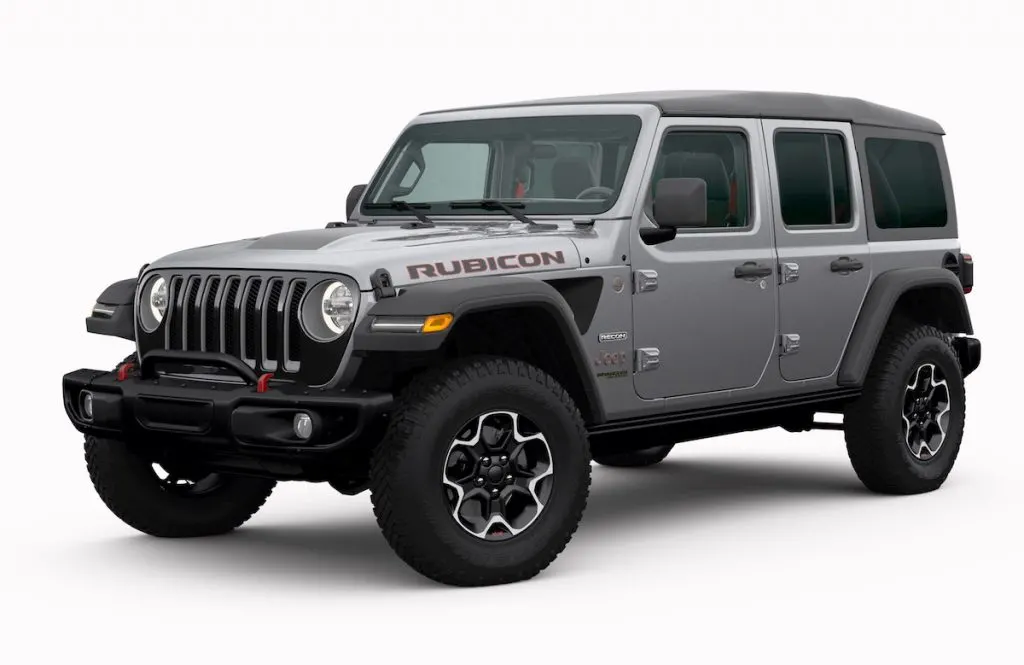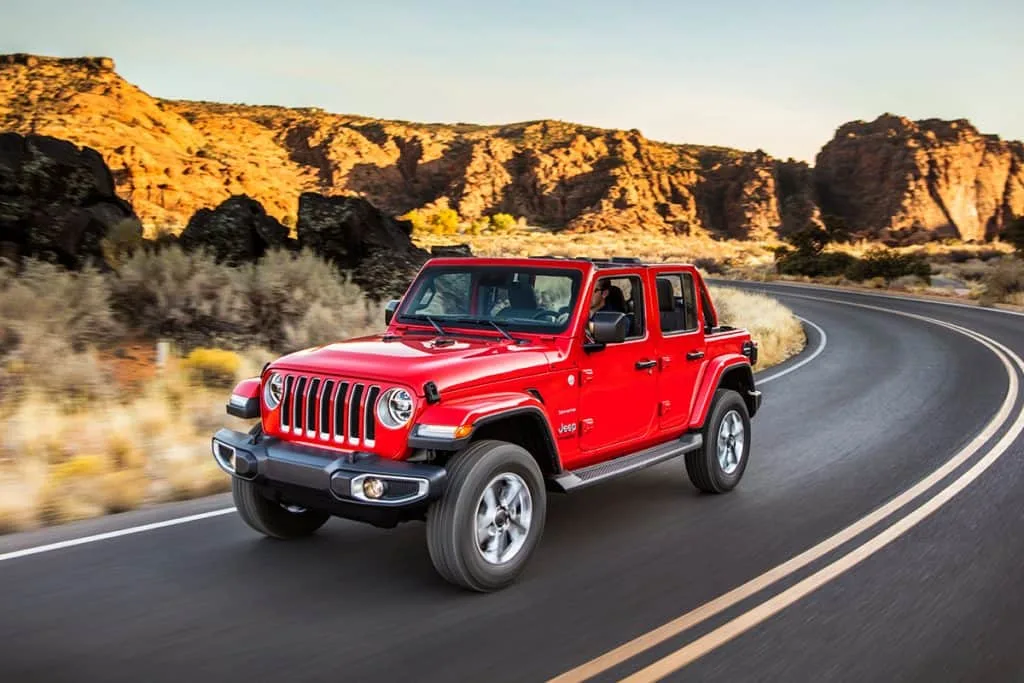The Jeep Wrangler has been a popular vehicle for many years and there are many benefits to owning a car of its performance. The manufacturers made many models since 1986 and have made significant improvements to boost performance and longevity.
For a Jeep Wrangler to last, a number of factors will have to be met. These include:
- The owner’s driving style
- The Vehicle’s maintenance schedule
- The year of manufacture
A Jeep Wrangler can easily last for 15 years with proper maintenance. However, the longevity of this vehicle solely depends on the owner and how much care they take of it. The 3rd generation Jeep Wranglers have the highest rate of complaints amongst consumers.
Keep reading to understand how to increase your time with your Jeep Wrangler with the least amount of headache.
Jeep Wrangler Longevity: Here’s What to Expect
1. Jeep Culture
When buying any car, it’s important to look at how many people have the car. These are the people that can point out any faults because they have already been using the vehicle.
In 2019, Jeep sold 1,485,000 vehicles which shows the popularity of the brand. The Jeep Wrangler enjoys a wide community of enthusiasts ranging from high schoolers to business people. The community includes people who genuinely love the brand and keep it at the top of other SUVs.
The importance of having a community for a car’s longevity is that owners can discuss many tips and tricks of repair and maintenance. They also share valuable parts that other owners may need. This is an indispensable resource that keeps Jeep Wrangler’s longevity.
2. Customizable
The Jeep Wrangler’s design is highly customizable. These potential upgrades to its interiors and exteriors can be very important in determining how long the vehicle will last.
Over the years, Jeep Wranglers have proved capable of withstanding harsh conditions in terms of terrain. This can be explained by the number of old models still on the roads today.
Its manufacturers are still pushing the envelope with its designs to make it more durable compared to other SUVs. Its owner can also work with a mechanic to make improvements to their vehicle that could improve its longevity overall.
3. Reliability
The reason the Jeep Wrangler enjoys a loyal fanbase as demonstrated by its huge community is that it’s a reliable vehicle. It’s very hardy when it comes to harsh weather.
It’s a safe vehicle on any road or terrain. Its design is focused on comfort and luxury which many people look for when they are looking to invest in a vehicle.
What Is Considered High Mileage on a Jeep?
In older, well-maintained models, Jeep Wranglers can go up to 200,000 miles. In newer models, 400,000 miles is a good figure with careful driving and regular service.
At What Mileage Do Jeep Wranglers Start Having Problems?
It’s well documented that most Jeep Wranglers start having mechanical issues after the 100,000 miles mark.

The Most Common Wrangler Issues
Most of the problems with Jeep Models after 100000 miles are mostly maintenance issues that arise and cut into their longevity.
I will explain some of the most common issues and attempt to provide possible solutions.
1. Leaky Doors
Leaky doors are common in Jeep Wranglers are the junction of the hardtop and the door match up. I find it extremely annoying when water seeps into my car and could possibly ruin the interior’s upholstery.
A possible reason for leaky doors could be worn-out door gaskets. These are fairly easy to replace although it’s not always guaranteed that the doors won’t leak ever again.
A possible solution to this problem could be the installation of a thin foam layer between the gasket and the jeep’s door. This extra protective layer seals the opening and prevents future leaks.
2. Heater Core Failure
The inside of a Jeep Wrangler should still be warm even in the harshest of winters. If not, then, there could be a problem with the heater core.
The heater core gets clogged over time from all the greasy waste from the radiator. I would suggest using a garden hose to unclog the heater core.
Use a controlled amount of pressure to flush the system. If this doesn’t work, then, it’s time to replace the heater core altogether.
It’s best to take preventative measures before the heater core is clogged up. Do this by ensuring that the radiator coolant is changed regularly.
3. Worn Valve Cover Gasket
A symptom of a worn valve cover gasket is usually traces of oil on the valve cover. In some cases, I sometimes smell burning around that area that often signifies a leak.
Leave the replacement of a worn valve cover gasket to the professionals because it requires technical know-how. With the intricate connection hoses and wires, I would not recommend fixing this on your own.
4. Oxygen Sensor Codes
After a while, the Jeep Wrangler will send an O2 sensor code through a check engine light. This means it’s time to go in for a replacement because if ignored, the Jeep tends to run tough. Ignoring this fault can also damage the catalytic converter.
5. Bent Drive Shaft
The bent rear driveshaft spins at thousands of RPMs. So, after 100,000 miles and the bent rear driveshaft isn’t secure, the vehicle is at risk of damage. A replacement is the only solution in this case.
6. Overstretched Transfer Case Chain
The transfer case chain becomes overstretched when the tires are spinning too fast, causing the chain to drag inside the case. The replacement can be done at home but ensure that the shift fork is reinstalled correctly.
Any mistake could mean that the Jeep would always be in 4 wheel drive. To avoid ruining the vehicle, seek professional help from a mechanic to save money down the road.
7. Evaporative Emissions Control (EVAP) System
The EVAP system is a complicated network of hoses, filters, and valves that serve to reduce the vehicle’s harmful emissions. The vehicle will turn on a warning light in case the system has a problem.
However, my go-to method is to check if the gas cap is loose. I also check if the seal surrounding the gas cap is torn or dry rotten. Additionally, I check under the vehicle for the leak detection pump.
After replacing all the worn parts, the jeep’s warning light will shut off immediately.
8. The Death Wobble
When steering components are damaged or have come loose, it’s common to experience what is called a death wobble. It’s not something new to Jeep Wrangler drivers when the driver feels a violent shake from the steering wheel.
The death wobble mostly occurs after hitting a pothole and the driver pressed the brake pedal hard. It might be scary but it’s nothing to worry about. If it happens then it’s time for a professional to take a look at the vehicle.
During an inspection, ensure that the steering arts and suspension are installed correctly. Check to see if there are any broken or bent parts in the front suspension. Overall, ensure all parts are tightly installed to avoid making the death wobble worse.

6 Tips to Make Your Wrangle Last Longer
To ensure that the Jeep Wrangler lasts longer, it has to be maintained and properly cared for.
This maintenance should be done every day at home and regularly by a qualified professional.
1. Regular Service Center Visits
Every car comes with instructions that it should be brought to a professional for regular inspections. After each visit, there is a sticker on the door indicating the next maintenance schedule.
These visits are more preventative because the professionals will go through the car top to bottom and fix any problems and prevent future issues. Not going for regular service could invalidate the car’s warranty agreement which will be expensive if a serious issue arises.
Regular checks will help repair parts that frequently wear out such as:
- Tires
- Suspension System
- Soft top
- Shock absorbers
2. Brake Repairs
Brakes are very important and unsurprisingly experience a lot of wear and tear. I would suggest looking out for signs like squeaky noises while driving and extra force needed while braking.
Both these scenarios can be solved by checking and replacing the brake pads.
Another thing to look out for is if the car pulls to a particular side when it stops. This means that the hydraulic pressure is off and needs checking.
Remember, brake pads should never go more than 40,000 miles without inspection for safety and vehicle longevity.
3. Rust
The body of the Jeep Wrangler is mainly made of metal, therefore, it’s bound to suffer from rust. During a routine check, the mechanic should look at the body thoroughly and replace any badly damaged parts to avoid spreading.
Another way to detect rust is if there are bubbles in the paint and finish of the vehicle. The paint and finish will also chip and come off in case of rust. In this case, seek professional help to assess the damage and repair the damaged areas.
To prevent rust and corrosion on the Jeep Wrangler, regular washing and waxing will do the trick. Do this even to the undercarriage and hard-to-reach areas as they are the most affected.
Remember to protect the vehicle from environmental and weather damage by parking it in the shade or covering it with a protective material when not in use. Harsh UV rays and other chemicals will age the vehicle and ruin its body over time.
4. Battery Maintenance
It’s common for batteries to be overlooked in an inspection if the car is running fine. This is a mistake because a thorough inspection of the battery could see it last longer than the expected 4 years.
During maintenance, the battery terminals should be cleaned thoroughly and any loose terminals tightened. This will ensure the batteries last longer and avoid impromptu visits to the mechanics before the scheduled service date.
5. Engine
Without a properly working engine, the vehicle won’t run at all. Ensure that the engine timing belt, drive belt, and hose are inspected every 20,000 miles. They should also be replaced every 50,000 miles.
Ensure that all parts of the engine are in top condition and working great. Use only the recommended engine oil for your vehicle because it will affect how the engine runs. In case of any doubt, go with an engine oil with friction-reducing additives as it works best on any engine.
6. Oil Change
This is an important skill to learn as a car owner because it’ll not only be economically feasible but also keep them prepared in case of anything. It’s important to learn what type of oil works for what type of Jeep Wrangler engine.
If not, the vehicle’s optimal performance will be affected, reducing its longevity in the long run.
Do Jeep Wranglers Last Long?
The answer here is yes. Some used Jeep Wranglers have lasted as long as several decades and that’s owing to their previous owners’ safe driving and regular maintenance. With care and caution, we have already seen that you can get up to 400,000 miles from your Jeep Wrangler.
Despite its high capabilities, ensure you don’t exert the vehicle. Avoid very harsh terrains and carry very heavy loads. Have a knowledgeable mechanic who can help you upgrade your car to improve its performance and ensure longevity.
With an active community, comes the benefit of having ready parts when issues arise. Parts are cheaper and readily available thanks to the huge market provided by the “Jeep culture”.
Don’t be deceived by people that say that the Jeep Wrangler is a high-maintenance vehicle. With a proper understanding of the vehicle’s parts and how they wear and tear, you can focus your attention and resources there. Averagely, expect to spend about $450 on maintenance costs.
